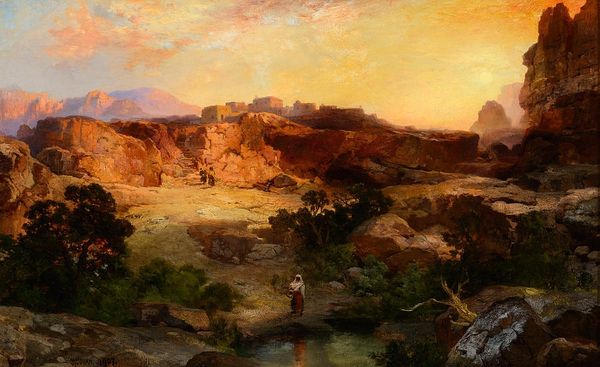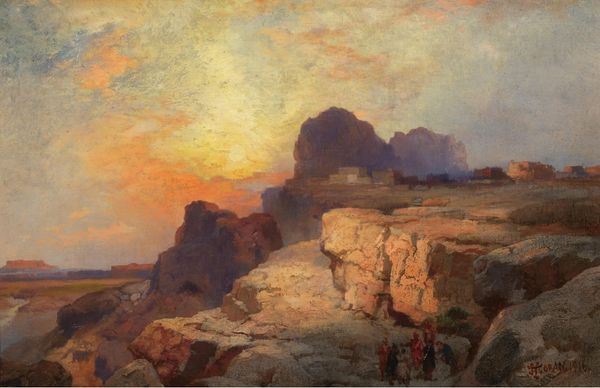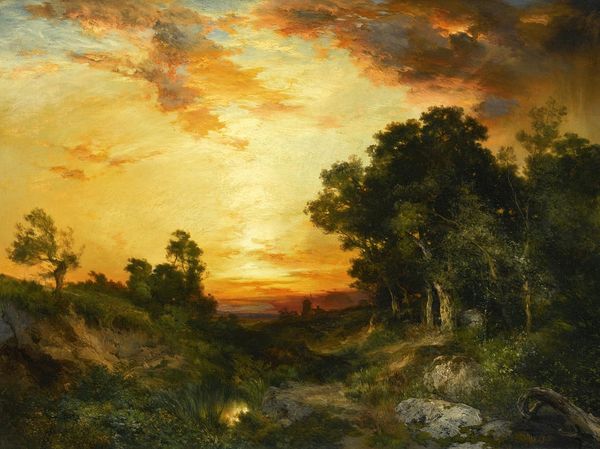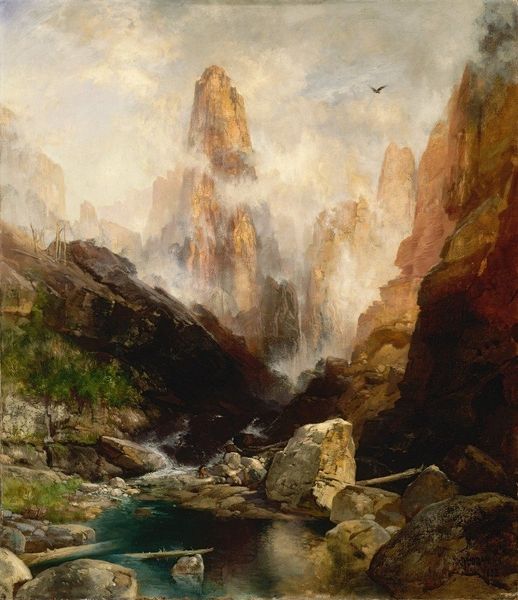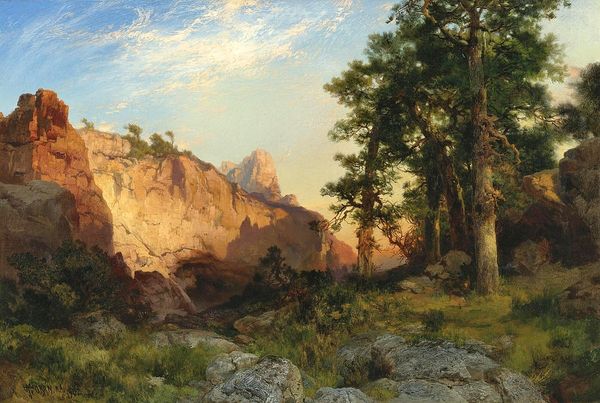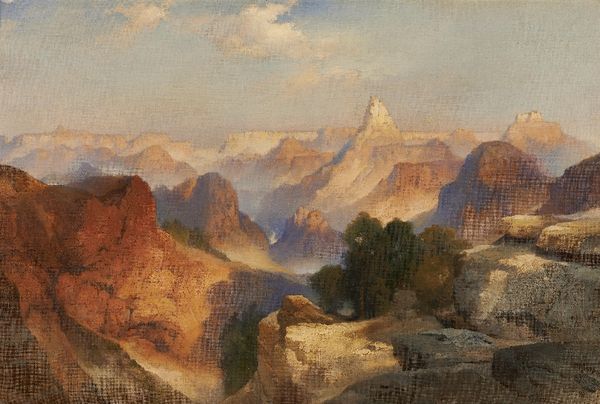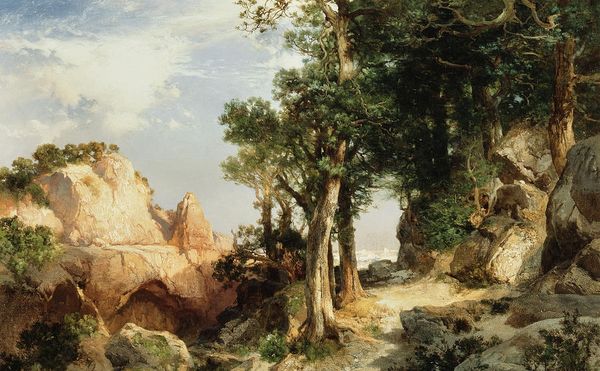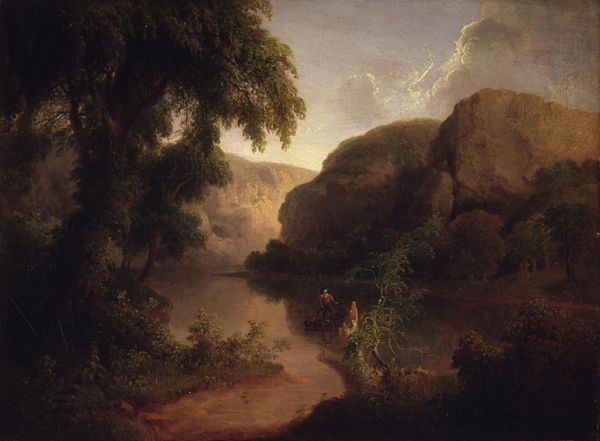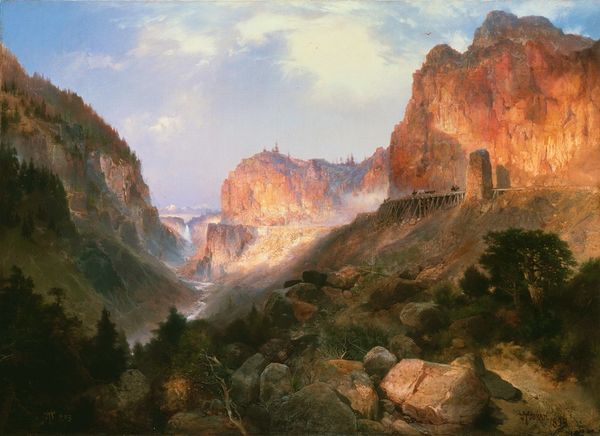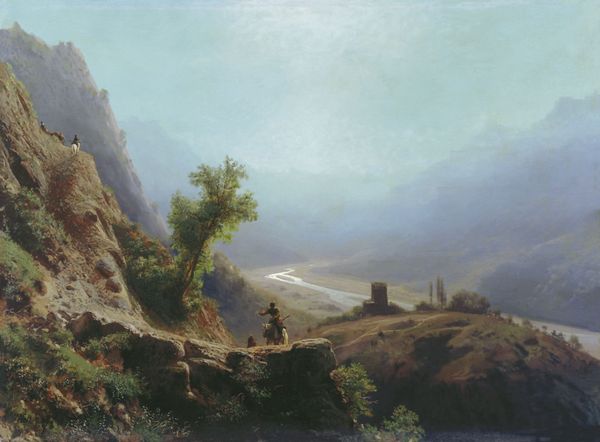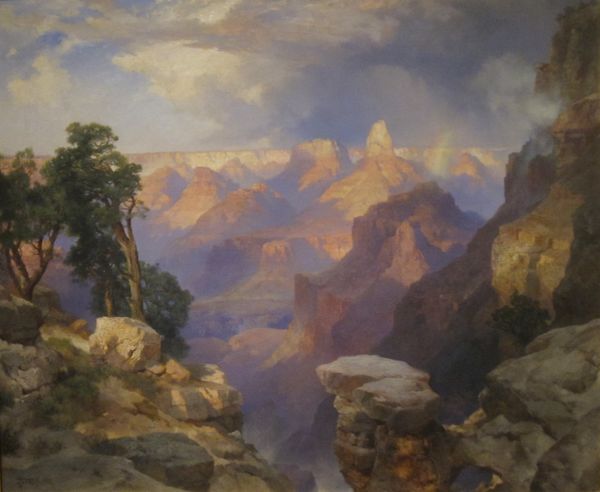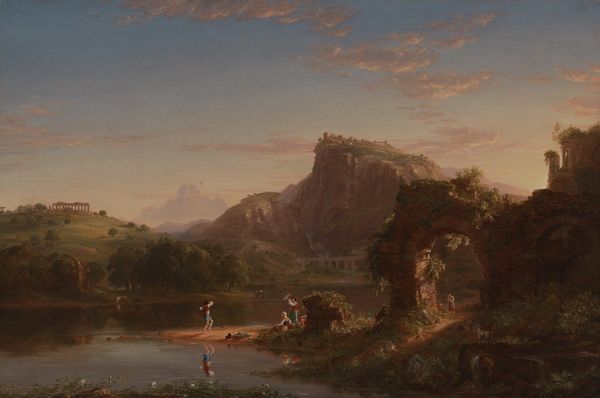
oil-paint
#
oil-paint
#
landscape
#
oil painting
#
hudson-river-school
#
realism
Copyright: Public domain
Curator: Looking at Thomas Moran's painting titled "A Side Canyon", I am immediately struck by a feeling of intense, almost theatrical drama in the landscape. The use of light evokes a sense of the sublime. What is your initial response to it? Editor: You’re right. It is dramatic! And gorgeous, yet... something about the painting's romanticization of the West feels complicated in today’s context. The landscape is idealized, almost untouched, obscuring the reality of westward expansion and its impact on indigenous peoples. Curator: That is an interesting and vital point. Considering the history of landscape painting, and especially of the Hudson River School, a painting such as this might at first seem to be solely about the sublime beauty of nature. Moran employs dramatic contrasts of light and shadow, which in symbolic terms, might also depict the light of knowledge or civilization arriving into the darkness. Editor: Exactly, and that is deeply embedded with power dynamics, right? This depiction ignores the fact that these landscapes were already inhabited, that there was already knowledge and civilization here long before Westerners arrived. This “untouched wilderness” is a colonial fantasy. What do you make of that lone tree in the left of the canvas? Curator: It is prominent, isn’t it? Symbolically, a single tree within the landscape, stretching into the sky, can represent growth, resilience, or even a connection between the earthly and the spiritual realms. But in relationship to your comments about westward expansion, it may equally be emblematic of settlers marking a space as their own. The rugged, rocky landscape, rendered with such vivid texture and earthy tones also has resonance with historical symbols of endurance, reflecting both strength and solitude. Editor: And, I’d say, it conveniently overlooks ecological disruption, forced displacement, the destruction of entire ways of life! It's essential to examine this romantic lens through which these landscapes were depicted because it directly shaped the policies and perceptions surrounding the American West. The canyon’s sublime light disguises some painful historical truths. Curator: So the canyon is an aesthetic, even a spiritual experience. However, that very interpretation cannot exist in isolation, apart from its entanglement with colonial history. This illuminates a key paradox about visual symbols—the potential for layered, contradictory meaning. Editor: Precisely. It reminds us that landscapes, even the most beautiful ones, are never just landscapes. They are also charged with stories, power and historical consequence.
Comments
No comments
Be the first to comment and join the conversation on the ultimate creative platform.

